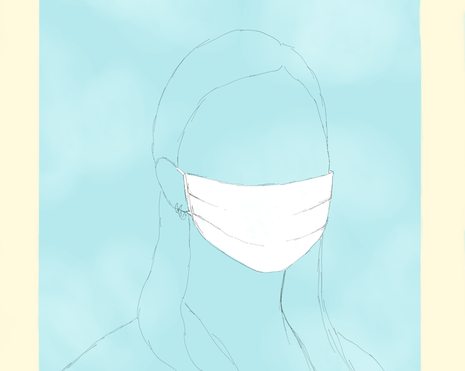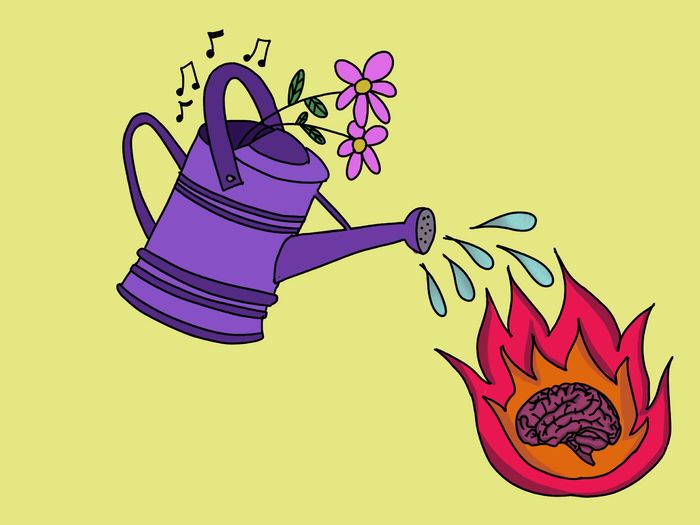So long, Covid?
Writing on her shared experiences of long COVID with her mum, Heather Cameron shares the challenges of living with a chronic illness

It is a daunting task to write about long COVID. I don’t wish either to catastrophize, or to trivialise. But, I will write: I have itched to read others’ experiences, so I hope my reflections might speak to even just a few people. I will explore some challenging aspects, some things I learnt, and some things which helped. If you have long COVID, I am not assuming that your experiences will have been the same as mine, or that what has helped me will help you. Every experience is different! In reading this, instead, I hope you will know you are not on your own.
My mum and I contracted COVID right at the beginning of March 2020. We have had long COVID since – though now we are much better than we were.
“Long COVID remains a condition of much medical uncertainty”
For me, one of the hardest aspects of long COVID is its fluctuating, non-linear nature. This looks like rebounds of the viral symptoms intermixed with periods of better health or, of gradually getting better. Now, although I am back at university, most weeks I have at least one ‘covidy’ day if not more. These fluctuations are confusing – for those experiencing them, but also for their friends and family. I found it painful to navigate questions about why I was feeling unwell again. Each time, I would feel shame and blame: an overwhelming sense that I had done something wrong.
Long COVID remains a condition surrounded by much medical uncertainty. We cannot know exactly what ‘long’ means – for how long, for forever? What has helped me to find a more peaceful relation to future uncertainty is an image from my mum. She has personal and medical experience of post-viral conditions. The image is as follows: imagine a pebble being dropped into a puddle or a pond. The point of impact is like the initial virus – relatively strong, but short. Then, rippling out from that point are waves in concentric circles. These are like the rebounds of the virus. This image helped me because the subsequent waves of the virus are expected – not a matter of blame or existentialism. It also helped to have an image with direction; although it may not feel it, the further from the initial pebble, the waves gradually get smaller and further apart. This gave me hope.
“Long COVID is a multi-system disease which doesn’t fit into one coherent ‘box’”
As my mum’s image relates, many people have long been navigating the difficulties of symptoms without diagnosis – or a diagnosis without treatment or understanding. It helps to meet other folk with relatable experiences. Social media can bridge gaps where meeting in person is not possible. A close friend formed a WhatsApp support-group: bringing together friends with chronic illness and energy-limiting conditions. Our conversations taught me: if your body experiences something which cannot be put into a box, you are not ‘making it up’ and it’s not ‘just in your head’. What does ‘it’s all in your head’ even mean, anyway? Pain, anxiety, depression, or whatever, are sensations felt in the body, but also ‘in our heads’ – this doesn’t make them any less valid or real.
Of course, one of the hardest parts of long COVID is its symptoms. Sometimes, it feels like that heavy, achey, hot-cold shivery foreboding you get with the flu. Some of the chest and gland symptoms feel like you are choking, or restricted, or like there is a cat sitting on your chest. This can wake you up in the night, or come knocking in the day. My experiences also involve migraines: sharp, nauseating pain, making me dizzy or spaced out. Long COVID also affects mood abnormally: agitation, anxiety, and a strange short-lived heavy despair and fear which my mum calls dysphoria. It comes on when I am exhausted, lying in bed trying to get to sleep. I pray, listen to my breathing, or get up and switch on the light. Sleep comes eventually. Exhaustion is also a feature: suddenly, like a white out of snow.
What has helped me face these sensations? In the moment, it often just helps to rest! It also helps to acknowledge the symptoms. Then, when feeling well enough, I try to find other ways to express how I am feeling: whether in speech, art or just tapping a rhythm. It has helped me to gradually learn how to pace myself – to respect the limits of my body and capacity. It has also helped to try to re-focus on the positives, after acknowledging symptoms. It can be simply knowing that someone loves you; listening to a podcast; enjoying something to eat or drink; gentle yoga; trying to form something of a weekly routine. Even if small, all these things make a difference.
I have been extremely lucky – not only to be able to write a bit about my experiences. My mum and I have had far less serious experiences with long COVID than many. To me, now it all feels significantly less of a catastrophic, existential nightmare and more like having a persistently irritating and unpleasant housemate living alongside me. Still, it has been a challenging time, and our journey with long COVID is not over. I do, however, have hope for the future. Media and scientific attention being given to long COVID has brought, and can continue to bring, better recognition to this illness. This has the life-changing potential to lead to more research for other post viral and chronic fatigue conditions too.
Long COVID is a multi-system disease which doesn’t fit into one coherent ‘box’ – it is not simply lung-dominated as expected. I hope now we can begin to consider not only people’s stories with headline-catching diagnoses like ‘long COVID’, but also others whose symptoms don’t fit neatly into ‘boxes’.
 News / CUP announces funding scheme for under-represented academics19 December 2025
News / CUP announces funding scheme for under-represented academics19 December 2025 News / Cambridge welcomes UK rejoining the Erasmus scheme20 December 2025
News / Cambridge welcomes UK rejoining the Erasmus scheme20 December 2025 News / SU reluctantly registers controversial women’s soc18 December 2025
News / SU reluctantly registers controversial women’s soc18 December 2025 Film & TV / Timothée Chalamet and the era-fication of film marketing21 December 2025
Film & TV / Timothée Chalamet and the era-fication of film marketing21 December 2025 Features / In-person interviews through student helpers’ eyes20 December 2025
Features / In-person interviews through student helpers’ eyes20 December 2025










